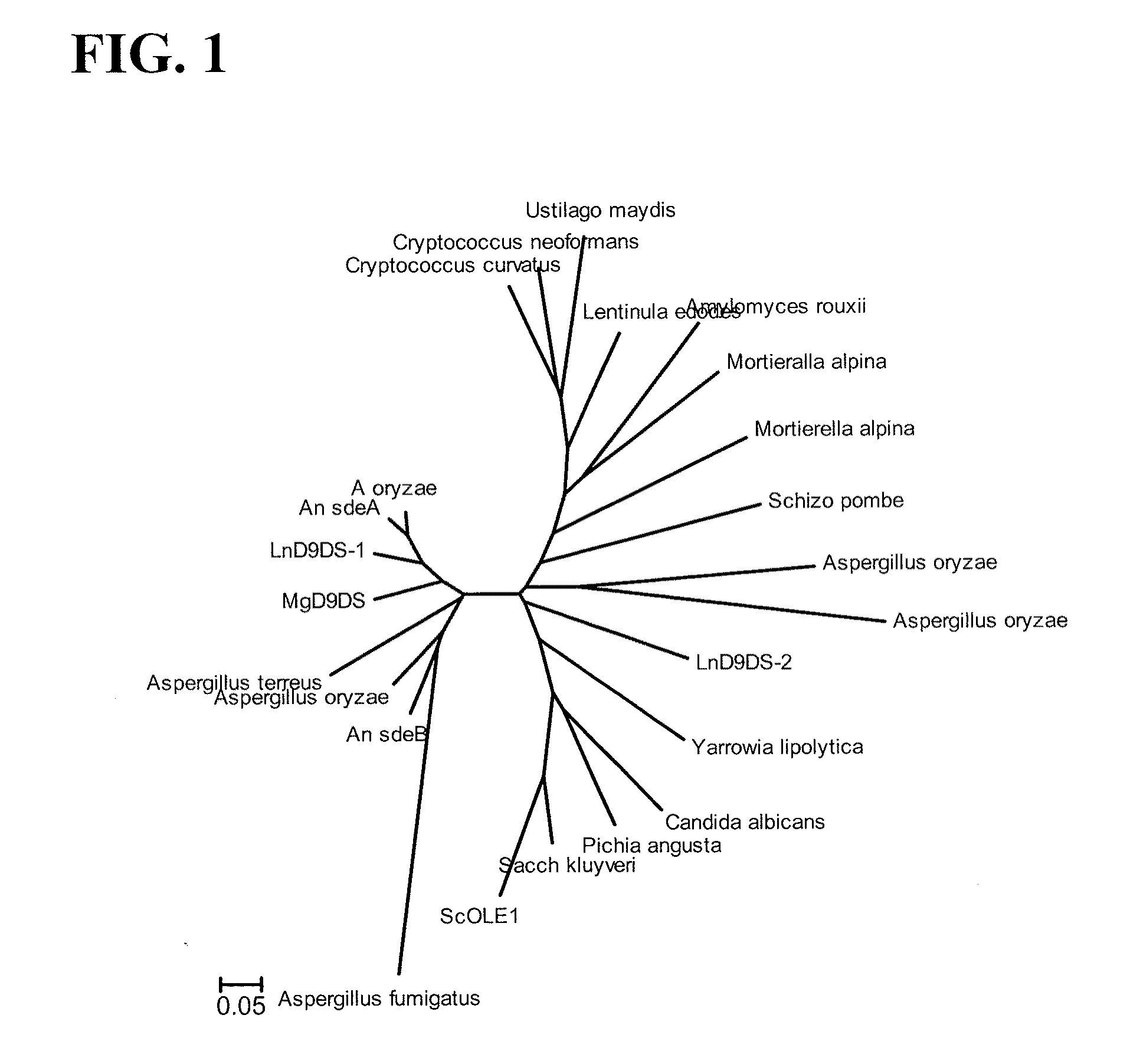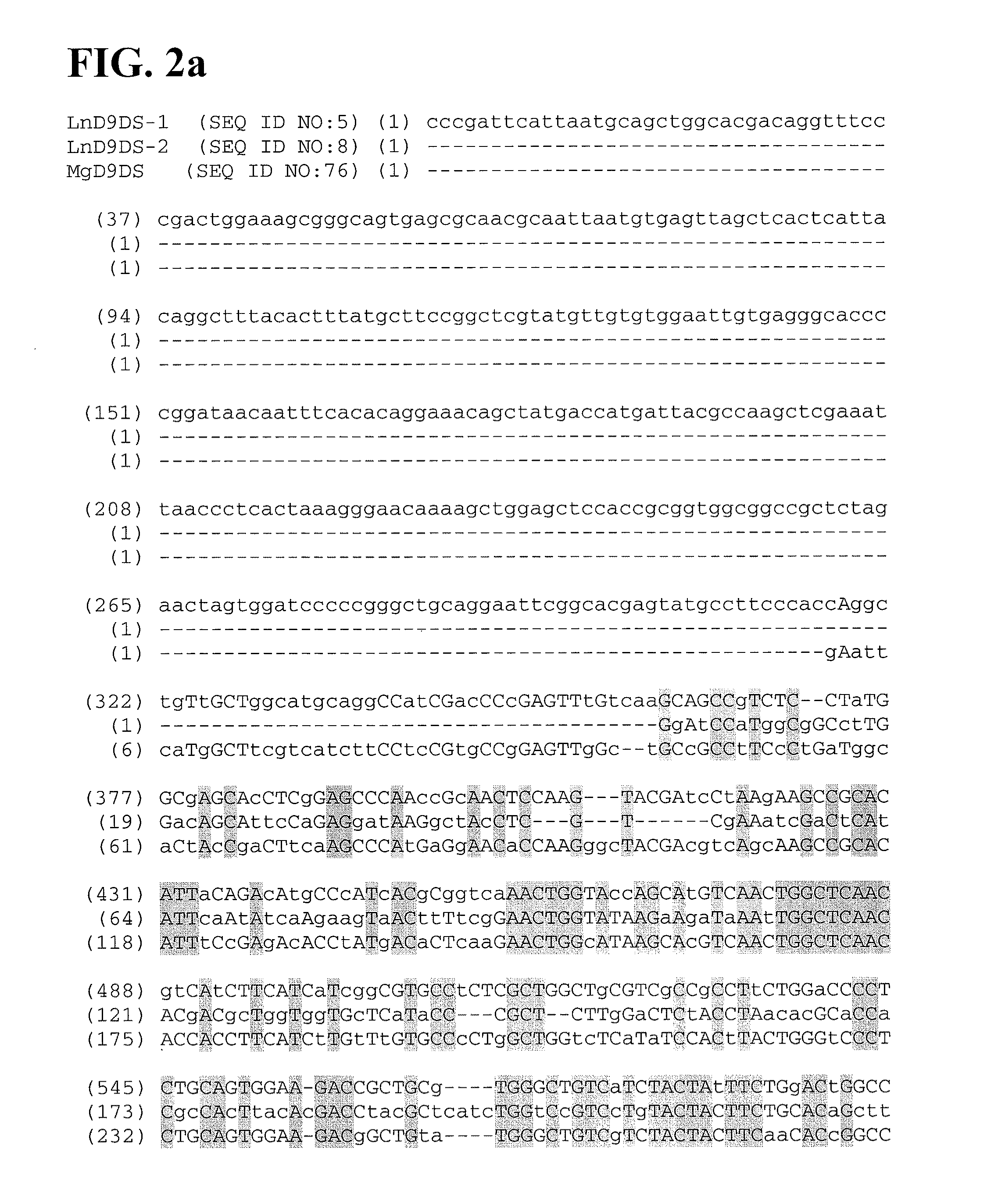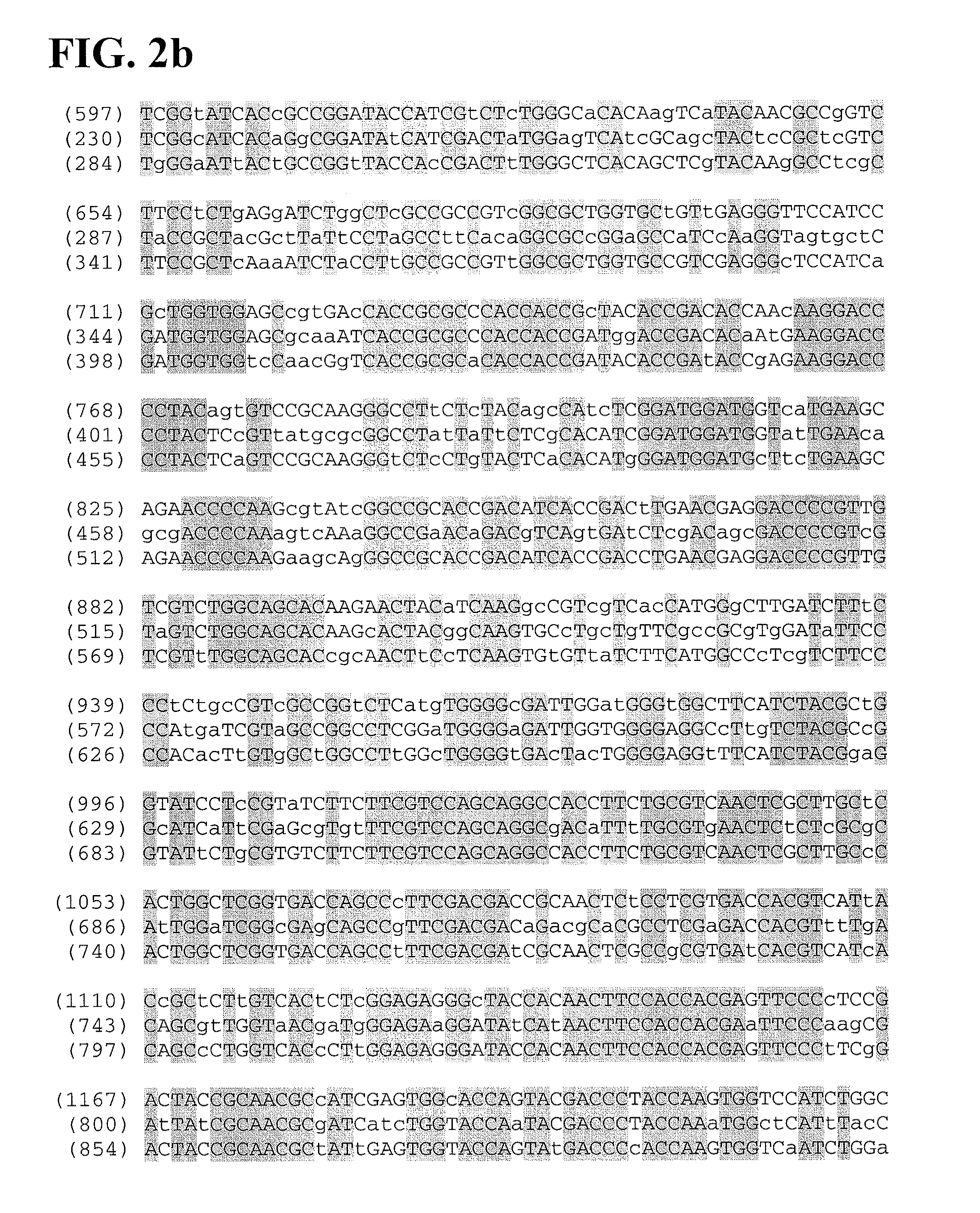Lowering saturated fatty acid content of plant seeds
- Summary
- Abstract
- Description
- Claims
- Application Information
AI Technical Summary
Benefits of technology
Problems solved by technology
Method used
Image
Examples
example i
Cloning of acyl-CoA Delta-9 Desaturases and Functional Characterization in ole1-Deficient Yeast
[0138]Cloning of Magnaporthe grisea acyl-CoA Delta-9 Desaturases
[0139]The Magnaporthe grisea acyl-CoA delta-9 desaturase gene (MgD9DS) was isolated from genomic DNA using primers based on a published NCBI / Broad Institute sequence originally annotated as a “hypothetical protein,” and having 55.4% identity at the nucleotide level to the S. cerevisiae acyl-CoA delta-9 desaturase (i.e., OLE1). Forward and reverse primers, each 41 base pairs in length, were designed. The forward primer, MgΔ9F (SEQ ID NO:1), included an EcoRI site at the 5′ end. The reverse primer, Mg9ΔR (SEQ ID NO:2), contained stop codons in each of three reading frames and a terminal XhoI site.
[0140]The MgD9DS gene was PCR amplified using the Takara EZ Taq™ PCR kit (Takara Bio Inc., Otsu, Shiga, Japan) following the manufacturer's protocol. The amplification conditions were 94° C. for 1 minute, followed by 30 cycles of 94° C....
example 2
Design and Synthesis of Optimized Delta-9 Desaturase Genes from Magnaporthe grisea, Helicoverpa zea, and Leptosphaeria nodorum
[0169]To obtain higher expression of fungal delta-9 desaturase genes in canola, we engineered these genes so that they are more efficiently expressed in transgenic canola cells containing the heterologous gene. Extensive analysis of the DNA sequence of the native Magnaporthe grisea, Helicoverpa zea and Leptosphaeria nodorum delta-9 desaturase coding regions disclosed herein as SEQ ID NO:9, SEQ ID NO:10 and SEQ ID NO:11, respectively, revealed the presence of several sequence motifs that are thought to be detrimental to optimal plant expression, as well as a non-optimal codon composition for such optimal plant expression. In order to design optimized genes encoding a delta-9 desaturase protein, we generated DNA sequences in silico that are more “plant-like” (and specifically, more “canola-like”) in nature, in which the sequence modifications do not hinder tra...
example 3
Plasmid Construction
[0177]The following plasmids were constructed using standard molecular biology techniques. Polynucleotide fragments containing plant transcription units (comprised of a promoter linked to a gene of interest, terminated by a 3′UTR), or “PTUs,” were constructed and combined with additional plant transcription units within the T-strand region of a binary vector.
[0178]Description of pDAB7318: pDAB7318 (FIG. 6; SEQ ID NO:58) was constructed using standard molecular biology techniques. This plasmid contains two desaturase PTU sequences. The first desaturase PTU contains the Phaseolus vulgaris phaseolin promoter (PvPhas promoter v2 (SEQ ID NO:67); Genbank: J01263), Phaseolus vulgaris 5′ untranslated region (PvPhas 5′ UTR (SEQ ID NO:68); Genbank: J01263), AnD9DS v3 gene (SEQ ID NO:49), Phaseolus vulgaris 3′ untranslated region (PvPhas 3′ UTR v1 (SEQ ID NO:69); Genbank: J01263) and Phaseolus vulgaris matrix attachment region (PvPhas 3′ MAR v2 (SEQ ID NO:70); Genbank: J012...
PUM
| Property | Measurement | Unit |
|---|---|---|
| Fraction | aaaaa | aaaaa |
| Fraction | aaaaa | aaaaa |
| Fraction | aaaaa | aaaaa |
Abstract
Description
Claims
Application Information
 Login to View More
Login to View More - R&D
- Intellectual Property
- Life Sciences
- Materials
- Tech Scout
- Unparalleled Data Quality
- Higher Quality Content
- 60% Fewer Hallucinations
Browse by: Latest US Patents, China's latest patents, Technical Efficacy Thesaurus, Application Domain, Technology Topic, Popular Technical Reports.
© 2025 PatSnap. All rights reserved.Legal|Privacy policy|Modern Slavery Act Transparency Statement|Sitemap|About US| Contact US: help@patsnap.com



